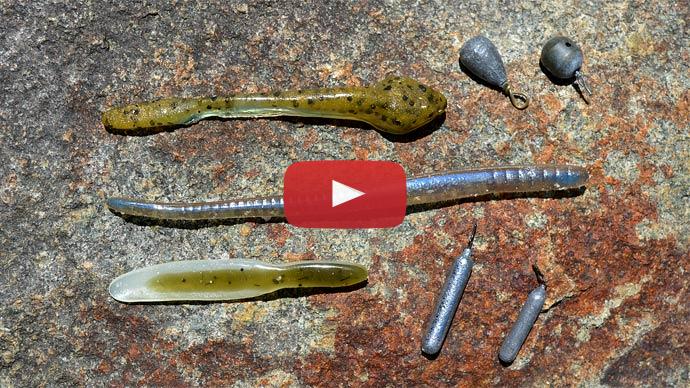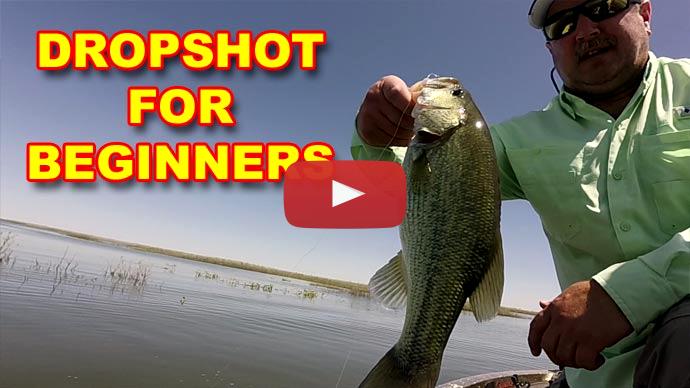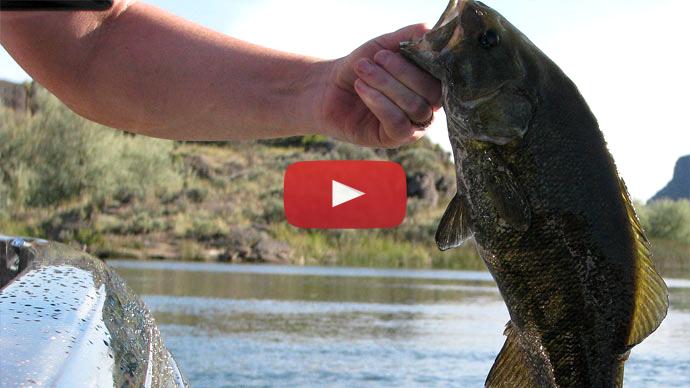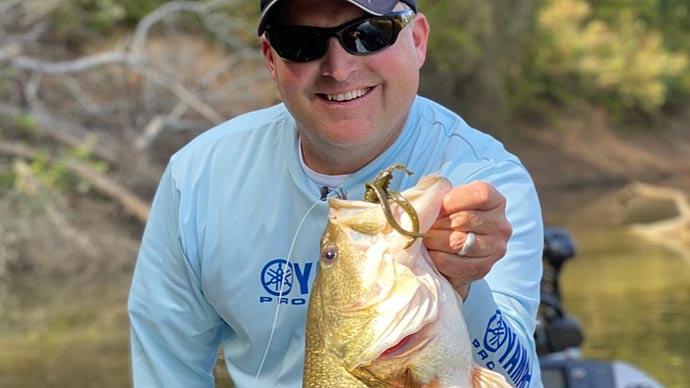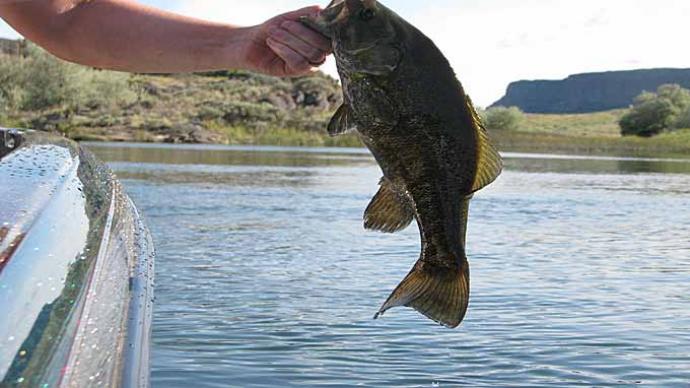Hey, folks. Glenn May here with BassResource.com. Today I want to talk to you about the drop shot rig. Just a little bit about rigging it. I rig it a little bit different than what some people do, but typically what you do, I'm sure you've been watching videos and you've learned a lot about drop shot by now, which is probably why you're watching this video.
What typically people do is they take a number one, number two hook, maybe a 1/0 hook and they use a palomar knot, tie it to the hook and use a tag line at the end and that's where they put their weight. I don't do that. Why? Because I like to use the uni-knot or the double uni and to tie the palomar for it is just out of my comfort zone, because I don't use it very often. So when I try to tie a drop shot using a palomar , it takes me a lot longer to do it than most people.
So what I use is a spin shot hook and that's just one of these. You've got a... what you've got here is a... it's a little swivel. Let's see if I can't ... if you can see a little bit. The hook pivots on that. All it is, is a little 1/0, 2/0 hook. I guess that's a one, but it's a swivel and so you tie a uni on the top and then you tie your tag line on the bottom, a little uni on the bottom. Real simple, but that way it's a lot easier for me and I feel it's a little more secure.
All the time when I've tied palomar knots versus uni, and I've done them on tests, I've found that the uni knot holds better and is stronger. Anyway, to tie the weight at the end what you want to use is a drop shot weight. This has a little swivel on it and it looks really weird, but's that's it. The reason you want to use a weight like this is because it doesn't get hung up in the weeds very much or it doesn't get hung up in rock either. It's got a little swivel on the end. So, it's hard to see ... you can't even see it spin, but it's a little swivel so it doesn't twist the line or anything.
It's got this really weird ... I don't know if you can see it or not, but it's really weird thing at the top and your first instinct is to just tie directly to it, but that's not what you want to do. Instead, what you want to do is, one the tag end, you want to tie a basic overhand knot. Just real simple. I know you can't see me doing this, but it doesn't matter. I mean, trust me, it's not a fancy fishing knot or anything. It's just your basic overhand knot. If my eyes will let me see it. It's really nothing more than that.
What you want to do is you want to thread the line through the eyelet here, and then what you're going to do is slide the line right up into this thing, right to the knot. Just like so. There you go. Then what that's going to do is it's going to hang. Just like that. I know it's hard to see because the line is really small. I'm using six pound test here. I usually use six to ten pound test. I'm using a medium light action seven foot spinning rod. Real light stuff, because you're using light wire hooks, right? You're using a one, size two hook, maybe a 1/0 hook.
You don't need a lot of strength and power to set the hook on those things and, in fact, if you're using a real heavy line and you're using a heavy rod, you may end up straightening out the hook. So use real light line, that's it. Now the reason why you hook it up like this is because if this does happen to get hung up on the rocks or something, it's real easy to break off. You just break the line off right here instead of losing your whole rig and you can retie really easily. So that's why you use that knot at the end. You just slide it right up inside that little slot. That's how that works.
Then with your bait on your ... on the business end of things, you just nose hook it. Here, I'm just using a little minnow imitation. I just nose hook it. Just like so, and that's the deal. That's it. That's how that works. I don't know if you can see that very well, but it just sits out like that when it's in the water and the fish just love it. It doesn't get hung up. I know with that exposed hook, it looks like it would get hung up, but it really doesn't.
You can use different hooks and you can Texas rig it so you can use it in weeds so it doesn't get hung up. As a matter of fact, what I like to do, is I ... sometimes when I'm fishing heavy milfoil or fishing hydrilla, I mean real heavy stuff, I'll use braid. I use braid on the leader and even down below, I'm using a flippin stick, fifty pound braid, maybe more than that. I'm using, 3/0 flipping hooks with a big bait on there and this works great as a pitchin rig, because the weight is down here at the end.
I'll pitch, matted grass, matted weeds, and that way the bait is quite a ways up above sitting off the bottom and those fish hanging up underneath those mats and stuff, man, they pummel it. So don't think it's just a light line tactic or finesse tactic for use when the bite is real tough or when you're in clear water.
Think out of the box, heavy up, even use your heavy flippin sticks and braided line and throw on some heavy cover and you'd be surprised at the kind of results you'll get. I hope those tips helped. For more tips and tricks like this, visit BassResource.com.

